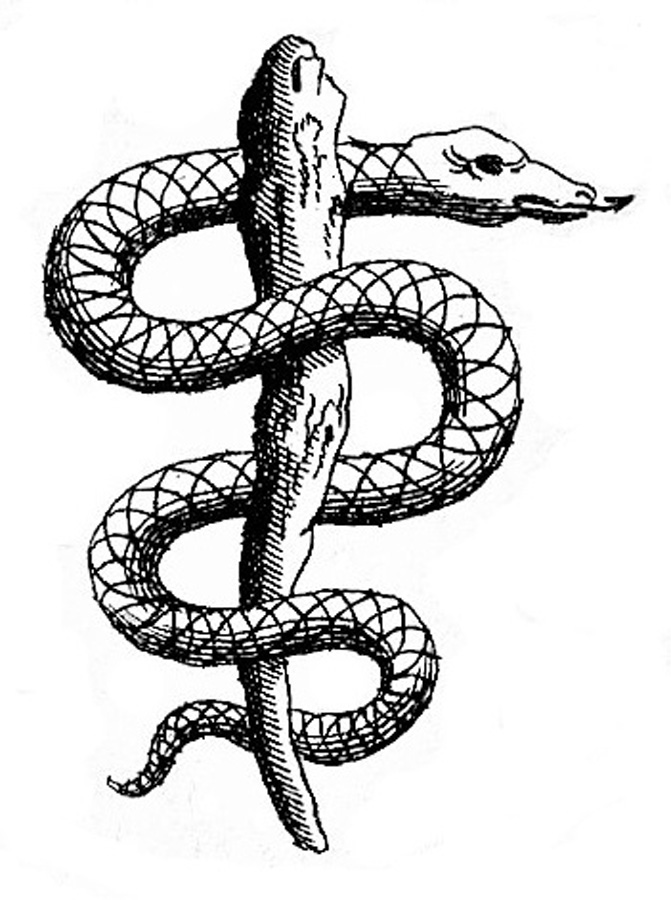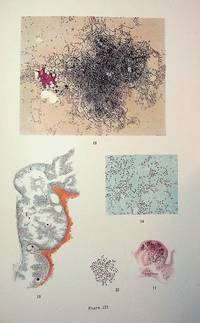first edition Printed paper covers
1862 · Boston
by Thoreau, Henry David
Boston: Ticknor and Fields, 1862. First edition, first printing.
FIRST PRINTING OF THOREAU'S LAST ESSAY, PUBLISHED 6 MONTHS AFTER HIS DEATH.
6 1/4 X 10 inches single issue of periodical in printed brown paper wraps, pp 385-512, 2 leaves publisher's advertisements; Autumnal Tints, pages 385-402. Light soiling to covers, wear bottom of spine, pages crisp and unmarked, binding tight, very good in custom archival mylar cover.
HENRY DAVID THOREAU (1817-1862), the naturalist, philosopher, and author of such classics as Walden and "Civil Disobedience," contributed a number of writings to The Atlantic in its early years. Although published anonymously, as noted in the Preface to The Atlantic Index, A List of Articles, With Names of Authors Appended, Published in "The Atlantic Monthly" From Its Establishment in 1857 to the Close of the Sixty-Second Volume in 1888 (Houghton, Mifflin and Company, Boston and New York, 1889), "The articles, at first, were not signed, the publishers did not publicly announce them, and the table of contents accompanying each volume did not contain the names of authors annexed to their several contributions. This last practice was begun in the ninth volume, and at the beginning of the twenty-sixth the present custom was adopted of signing each article with the author's name."
FROM Henry David Thoreau, October or Autumnal Tints, Foreword by Robert D. Richardson, W.W. Norton, New York, 2012: "In February 1862, as the forty-four-year-old Henry Thoreau lay dying [of tuberculosis] in his family home on Main Street in Concord, Massachusetts, in the cold New England winter, he roused himself to one last great literary effort. Thoreau now turned away from the grand visionary projects he had been nursing of late, abandoning the huge Calendar of Concord that he meant to build up season by season, tree by tree, bird by bird, day by day, and detail by detail until it would flower into completion as an inexhaustible account of every natural happening in a statistically average year as lived out at the center of Thoreau's universe, Concord, Massachusetts. Thoreau now turned from this no longer realizable ambition to smaller projects he could still get both his hands around, stand-alone bits and pieces of the grand project. One of the chief of these was an account of the spectacular fall color in New England that he intended to call "October, or Autumnal Tints," and which belonged to a larger never-to-be realized project he called "The Fall of the Leaf." Emerson, idealism, and Thoreau's own proclivities led Thoreau to try to understand death in the context of nature. Almost as soon as he recommenced keeping a regular journal for its own sake and quite apart from other writing projects-that was November 1850-Thoreau began to catalog the fall colors. But now in the winter of 1858-59, he pulled a decade's worth of journal entries together, organizing in the early weeks of 1862 the dying Thoreau worked to turn his "Autumnal Tints" lecture into a printable essay. He sent the finished piece to Ticknor and Fields on February 20, 1862. It was accepted and set in type. Thoreau returned corrected proofs to the printer. On May 6, at nine in the morning, Henry Thoreau died. "Autumnal Tints" was published-came to life-six months later, in the Atlantic Monthly for November 1862. Once again, the law of death proved them into a seasonal chronology and giving them as the lecture "Autumnal Tints" in Worcester on February 22, 1859. Not quite two years later, on December 11, 1860, at Waterbury, Connecticut, Thoreau gave the last lecture of his career. It was, fittingly enough, "Autumnal Tints." In the early weeks of 1862 the dying Thoreau worked to turn his "Autumnal Tints" lecture into a printable essay. He sent the finished piece to Ticknor and Fields on February 20, 1862. It was accepted and set in type at what seems to us now as breakneck speed, for on March 11 Thoreau returned corrected proofs to the printer. On May 6, at nine in the morning, Henry Thoreau died. "Autumnal Tints" was published-came to life-six months later, in the Atlantic Monthly for November 1862 [offered here]. Without the sure knowledge he was dying, Thoreau would not have pulled "Autumnal Tints" together. The essay is concerned with the perception of beauty-the important word here is perception-and with how to teach ourselves to see more than we usually do. Thoreau's comments are practical, helpful, and profoundly cheering. His enthusiasm, his intensity, is so great in "Autumnal Tints" that he needed thirty-three exclamation points and twenty-three words or phrases italicized for emphasis in the twenty-five page piece! Thoreau thought the autumn leaves were teaching us how to die." (Inventory #: 1643)
FIRST PRINTING OF THOREAU'S LAST ESSAY, PUBLISHED 6 MONTHS AFTER HIS DEATH.
6 1/4 X 10 inches single issue of periodical in printed brown paper wraps, pp 385-512, 2 leaves publisher's advertisements; Autumnal Tints, pages 385-402. Light soiling to covers, wear bottom of spine, pages crisp and unmarked, binding tight, very good in custom archival mylar cover.
HENRY DAVID THOREAU (1817-1862), the naturalist, philosopher, and author of such classics as Walden and "Civil Disobedience," contributed a number of writings to The Atlantic in its early years. Although published anonymously, as noted in the Preface to The Atlantic Index, A List of Articles, With Names of Authors Appended, Published in "The Atlantic Monthly" From Its Establishment in 1857 to the Close of the Sixty-Second Volume in 1888 (Houghton, Mifflin and Company, Boston and New York, 1889), "The articles, at first, were not signed, the publishers did not publicly announce them, and the table of contents accompanying each volume did not contain the names of authors annexed to their several contributions. This last practice was begun in the ninth volume, and at the beginning of the twenty-sixth the present custom was adopted of signing each article with the author's name."
FROM Henry David Thoreau, October or Autumnal Tints, Foreword by Robert D. Richardson, W.W. Norton, New York, 2012: "In February 1862, as the forty-four-year-old Henry Thoreau lay dying [of tuberculosis] in his family home on Main Street in Concord, Massachusetts, in the cold New England winter, he roused himself to one last great literary effort. Thoreau now turned away from the grand visionary projects he had been nursing of late, abandoning the huge Calendar of Concord that he meant to build up season by season, tree by tree, bird by bird, day by day, and detail by detail until it would flower into completion as an inexhaustible account of every natural happening in a statistically average year as lived out at the center of Thoreau's universe, Concord, Massachusetts. Thoreau now turned from this no longer realizable ambition to smaller projects he could still get both his hands around, stand-alone bits and pieces of the grand project. One of the chief of these was an account of the spectacular fall color in New England that he intended to call "October, or Autumnal Tints," and which belonged to a larger never-to-be realized project he called "The Fall of the Leaf." Emerson, idealism, and Thoreau's own proclivities led Thoreau to try to understand death in the context of nature. Almost as soon as he recommenced keeping a regular journal for its own sake and quite apart from other writing projects-that was November 1850-Thoreau began to catalog the fall colors. But now in the winter of 1858-59, he pulled a decade's worth of journal entries together, organizing in the early weeks of 1862 the dying Thoreau worked to turn his "Autumnal Tints" lecture into a printable essay. He sent the finished piece to Ticknor and Fields on February 20, 1862. It was accepted and set in type. Thoreau returned corrected proofs to the printer. On May 6, at nine in the morning, Henry Thoreau died. "Autumnal Tints" was published-came to life-six months later, in the Atlantic Monthly for November 1862. Once again, the law of death proved them into a seasonal chronology and giving them as the lecture "Autumnal Tints" in Worcester on February 22, 1859. Not quite two years later, on December 11, 1860, at Waterbury, Connecticut, Thoreau gave the last lecture of his career. It was, fittingly enough, "Autumnal Tints." In the early weeks of 1862 the dying Thoreau worked to turn his "Autumnal Tints" lecture into a printable essay. He sent the finished piece to Ticknor and Fields on February 20, 1862. It was accepted and set in type at what seems to us now as breakneck speed, for on March 11 Thoreau returned corrected proofs to the printer. On May 6, at nine in the morning, Henry Thoreau died. "Autumnal Tints" was published-came to life-six months later, in the Atlantic Monthly for November 1862 [offered here]. Without the sure knowledge he was dying, Thoreau would not have pulled "Autumnal Tints" together. The essay is concerned with the perception of beauty-the important word here is perception-and with how to teach ourselves to see more than we usually do. Thoreau's comments are practical, helpful, and profoundly cheering. His enthusiasm, his intensity, is so great in "Autumnal Tints" that he needed thirty-three exclamation points and twenty-three words or phrases italicized for emphasis in the twenty-five page piece! Thoreau thought the autumn leaves were teaching us how to die." (Inventory #: 1643)






